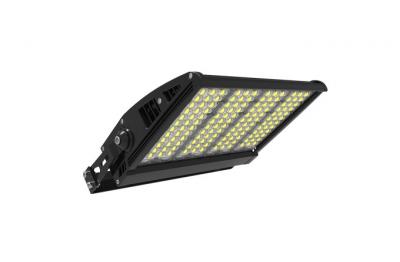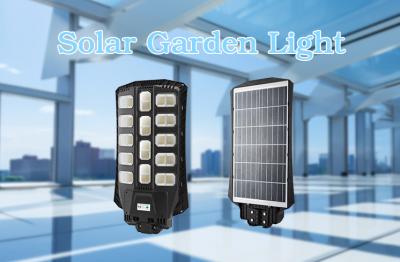
In recent years, the adoption of solar energy systems has surged as people seek cleaner and more sustainable sources of power. Hybrid solar inverters, a crucial component of such systems, have emerged as versatile solutions capable of handling not only the generation and utilization of solar energy but also managing grid failures effectively. In this article, we delve into the workings of hybrid solar inverters and how they seamlessly navigate grid failures to provide uninterrupted power supply.
Hybrid solar inverters, also known as multi-mode inverters, bridge the gap between traditional grid-tied inverters and off-grid inverters. They enable solar energy systems to operate in diverse modes, catering to various scenarios, including normal grid operation, excess energy export, and, crucially, during grid failures.
Under normal conditions, hybrid solar inverters work as grid-tied inverters, converting the direct current (DC) power generated by solar panels into alternating current (AC) power that can be used by household or industrial appliances. Excess energy can be directed back into the grid, sometimes even earning credits through net metering.
However, when a grid failure occurs due to storms, maintenance, or other reasons, hybrid solar inverters rapidly transition into a backup mode. This transformation is nearly instantaneous, thanks to advanced detection mechanisms that sense grid status changes. Once a grid outage is detected, the inverter isolates the system from the grid, preventing back-feeding of electricity.
The standout feature of hybrid solar inverter is their ability to switch to battery backup mode during grid failures. In this mode, the inverter operates independently of the grid, creating an "island" microgrid powered by the energy stored in connected batteries. This allows essential loads, predetermined by the user, to continue running uninterrupted.
During this phase, the inverter dynamically manages the flow of power between the solar panels, batteries, and critical loads. Prioritizing essential devices ensures that households, businesses, or facilities maintain access to vital electricity even during prolonged outages. This capability enhances energy resilience and addresses one of the main concerns associated with solar energy systems – their dependency on a consistent grid connection.
Many hybrid solar inverters come equipped with intelligent energy management systems that optimize the use of available resources. These systems intelligently balance energy generation from solar panels, energy storage in batteries, and the demand from connected loads. By making real-time decisions based on the available resources, these inverters ensure efficient energy utilization and extend battery life, especially when grid failures lead to extended backup periods.
Once grid power is restored, hybrid solar inverters smoothly transition back to grid-tied mode. They synchronize their output with the grid, resuming the export of excess energy generated by the solar panels. Simultaneously, these inverters may start recharging the batteries in preparation for any potential future grid disruptions, maintaining a ready state for subsequent power outages.
Modern hybrid solar inverters often come with remote monitoring and control capabilities, allowing users to oversee the system's performance and status. Through smartphone apps or web dashboards, users can keep track of battery levels, inverter functions, and energy flows. This remote access extends to mode switching, enabling users to shift between operating modes even when they are away from the premises.
Hybrid solar inverters represent a significant advancement in solar energy technology, offering a versatile solution for both energy generation and backup power during grid failures. Their seamless transition from normal grid operation to battery backup mode ensures a continuous supply of electricity to critical loads, enhancing energy resilience and reducing dependency on an unstable grid. As renewable energy adoption continues to rise, these intelligent inverters play a pivotal role in shaping a more secure and sustainable energy future.
You may be also interested in: A Full Understanding of Hybrid Solar Inverter
If you live in a sunny place like South Africa or South America, wholesale solar street lights from Anern can easily last 10 hours at night all year round. In some Northern European countries, solar lights last for a shorter time at night in winter. In these areas, it is expected to last an average of six hours during winter.
3-7days for samples, 7-20 days for bulk order, depending on order quantity and production schedule.
Anern supplies solar energy products and system solutions to customers in more than 200 countries and regions, supporting residential, commercial, industrial, and off-grid solar power projects.
Anenr main serve markets:
Middle East: Iraq, Lebanon, Syria, United Arab Emirates, Afghanistan, Yemen, Saudi Arabia
Africa: Nigeria, Zambia, Kenya, Mali, Burkina Faso, South Africa, Egypt, Tanzania, Mozambique, DRC, Botswana, Ethiopia, Egypt, Morocco, Cameroon, Zimbabwe, Ghana, Algeria, Libya, Uganda
Southeast Asia: Philippines, Indonesia, Malaysia, Myanmar, Thailand, Vietnam, Pakistan
Americas: Colombia, Mexico, Brazil, Peru, Argentina, Chile, Honduras, Ecuador, United States
Central Asia: Uzbekistan, Kazakhstan, Kyrgyzstan, Tajikistan
Europe: Ukraine, Türkiye, Germany, Romania, Poland, France
Note: If you want to distinguish by product, the above regions of the Middle East, Africa, Southeast Asia, and South America are all suitable for solar street lights and energy storage, while Central Asia and Europe are only suitable for solar energy storage products.
Yes, Anern produces lithium batteries.
Multiple references explicitly confirm this:
Anern's product lineup includes various types of Solar Lithium Batteries, such as Wall Mounted, Floor Type, Rack Mounted, and Lead-Acid Replacement Batteries for different applications.
They manufacture specific lithium battery product lines like the AN-LFP Series (12.8V50AH, 12.8V100AH, 12.8V300AH) and AN-LPB-Nplus/Npro Series wall-mounted batteries (24V-51.2V configurations).
Anern specializes in lithium battery manufacturing alongside energy storage systems (ESS), explicitly stating: "With over 16 years of solar industry experience, Anern specializes in lithium battery manufacturing.
Their direct product catalog lists 12V, 24V, and 48V lithium-ion batteries as core "Hot Products".
Technical documentation confirms their lithium batteries feature LiFePO4 chemistry, smart BMS protection, and certifications (CE, ROHS, UN38.3).
First of all, the sun is a renewable energy source and is free to use.
Second, the maintenance cost of solar components is low enough.


